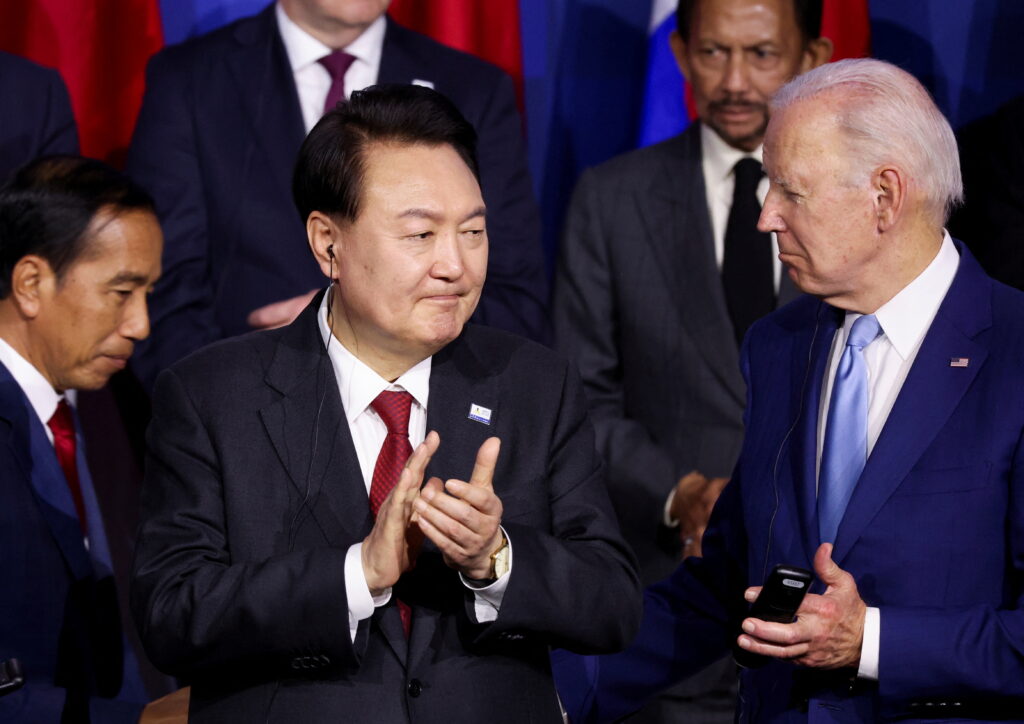The Indo-Pacific covers a region from North America to the African coast but it’s missing something in the middle: ‘Asia’ in its name and East Asia’s deeply interdependent economic ties extending across the Pacific and to South Asia.
Attempts to bring some coherent economic underpinning to the framing of the Indo-Pacific idea, which started as a maritime security concept, have thus far failed.
The United States withdrew from the Trans-Pacific Partnership (TPP) on day one of Donald Trump’s presidency in 2017 and Prime Minister Narendra Modi took India out of the Regional Comprehensive Economic Partnership (RCEP) arrangement at the eleventh hour in 2019. So much for India’s Indo-Pacific economic engagement.
The effort to reframe the Asia Pacific into the Indo-Pacific region and draw in India is underway strategically through the Quad and bilateral security initiatives. But piecemeal bilateral trade agreements with regional economies are unlikely to shift the dial until India commits to openness and realises that import-substituting industrial policies don’t work.
Meanwhile trade between China and India continues to grow rapidly, as a result of the powerful forces of complementarity and economic gravity, despite their barely civil political relationship. They now have a US$140 billion a year trading relationship, though an asymmetric one, with Chinese parts, intermediate goods and machinery essential inputs to Indian industrial production.
Getting some policy architecture in place can help manage the risks and inevitable frictions in a complicated Sino-Indian relationship. The RCEP grouping would have done that, with more countries around the table. Although India closed that door on RCEP, its members still stand prepared to engage India and could do so readily even if India remains reluctant to sign on to the agreement via its ASEAN-inspired economic cooperation agenda.
The TPP was eventually concluded without the United States as the Comprehensive and Progressive Agreement for Trans-Pacific Partnership (CPTPP).
With the advent of the Biden administration, US efforts turned to focus on the Indo-Pacific Economic Framework (IPEF), launched in May 2022. Its 14 members include seven ASEAN members, Australia, Fiji, Japan, New Zealand, the United States and India (which opted out of the trade pillar of the framework). Significant resources have been devoted to IPEF negotiations over the past two years.
Beyond its trade pillar, IPEF includes three other pillars: supply chains, clean energy, and tax and anti-corruption. It’s promoted as a modern agreement that deals with economic challenges faced by US partners in a post-COVID world. It sits uncomfortably alongside US-China strategic competition, with most IPEF members deepening trade and investment with the United States but more so with China.
What the United States could offer through IPEF was limited from the start. With an America First approach entrenched through Biden’s middle-class trade policy, the large US economy was not open to negotiating market access. There’s some funding available for less developed IPEF members but little incentive to make commitments to opening trade. The supply chain pillar was concluded in 2023 and supposed to come into force in February this year.
IPEF is not a legally binding agreement for all members, including the United States, where it will be implemented through executive order to avoid the need for Congress’ approval.
A presidential executive order is what Donald Trump used to exit the TPP. He has threatened to ‘knock out’ IPEF if he’s elected this November, calling it ‘TPP 2.0 and even worse than TPP’.
In this week’s lead article, Erin Murphy questions whether IPEF will survive beyond the year. Negotiators had worked hard to launch IPEF last year. But ‘right before the November 2023 APEC Summit, the Biden Administration announced it would not conclude the trade pillar’, she explains, ‘due to fellow Democrats assuming it could be a killer campaign issue’.
There’s a strong interest in Asia in keeping the United States locked into the regional economy. At this time a non-binding IPEF is the only way to keep Washington engaged. But the dynamics of American domestic politics now threaten even that endeavour.
Non-binding economic agreements are not necessarily a bad way to proceed. ASEAN, APEC, the G20 and other forums and frameworks are built on the voluntary cooperation needed to make policy progress over time. It’s an approach that’s favoured in Asia because of the region’s diversity and the need to build trust and confidence in policy change over time. It’s an approach that can be deployed to encourage concerted unilateral action to achieve joint policy goals — countries moving in the same direction, in their own interest, at their own graduated pace and with benefits compounded by doing so together.
RCEP was the first region-wide legally binding agreement in East Asia but structured within it is also an economic cooperation agenda designed to help lift the lagging economies, not to punish them.
What’s more important than the mode of economic cooperation is the commitment to openness and the process of cooperation. That’s what the Asia Pacific economies have had through APEC and the ASEAN processes, including how Northeast Asia, Australia and New Zealand engage with ASEAN.
With India and the United States taking time out from commitment to economic openness, the Indo-Pacific economic framework idea is bound to languish. And the burden of defending an open regional economy, through energising RCEP and CPTPP, must fall upon East Asia.
The EAF Editorial Board is located in the Crawford School of Public Policy, College of Asia and the Pacific, The Australian National University.

